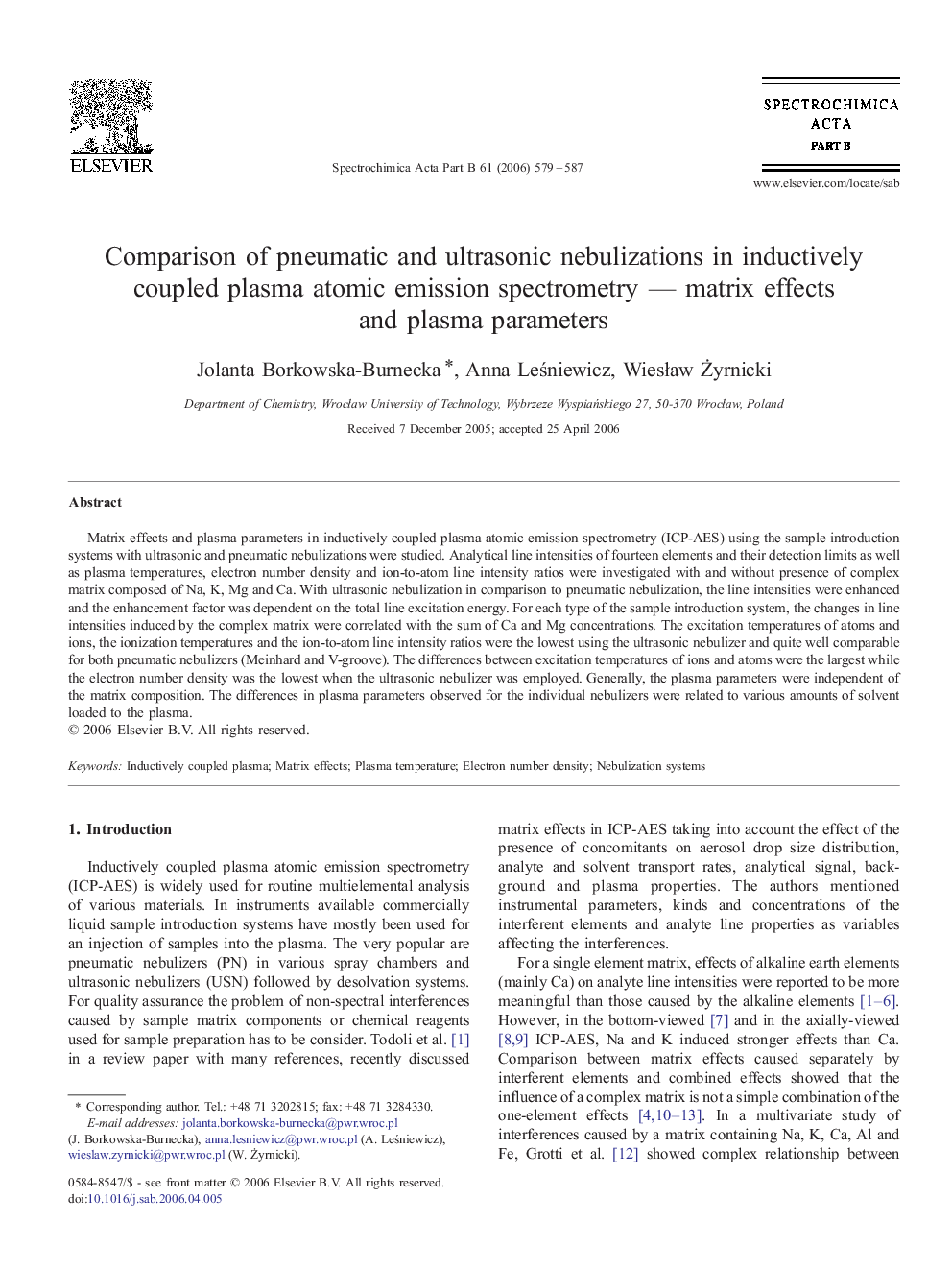| Article ID | Journal | Published Year | Pages | File Type |
|---|---|---|---|---|
| 1241089 | Spectrochimica Acta Part B: Atomic Spectroscopy | 2006 | 9 Pages |
Matrix effects and plasma parameters in inductively coupled plasma atomic emission spectrometry (ICP-AES) using the sample introduction systems with ultrasonic and pneumatic nebulizations were studied. Analytical line intensities of fourteen elements and their detection limits as well as plasma temperatures, electron number density and ion-to-atom line intensity ratios were investigated with and without presence of complex matrix composed of Na, K, Mg and Ca. With ultrasonic nebulization in comparison to pneumatic nebulization, the line intensities were enhanced and the enhancement factor was dependent on the total line excitation energy. For each type of the sample introduction system, the changes in line intensities induced by the complex matrix were correlated with the sum of Ca and Mg concentrations. The excitation temperatures of atoms and ions, the ionization temperatures and the ion-to-atom line intensity ratios were the lowest using the ultrasonic nebulizer and quite well comparable for both pneumatic nebulizers (Meinhard and V-groove). The differences between excitation temperatures of ions and atoms were the largest while the electron number density was the lowest when the ultrasonic nebulizer was employed. Generally, the plasma parameters were independent of the matrix composition. The differences in plasma parameters observed for the individual nebulizers were related to various amounts of solvent loaded to the plasma.
